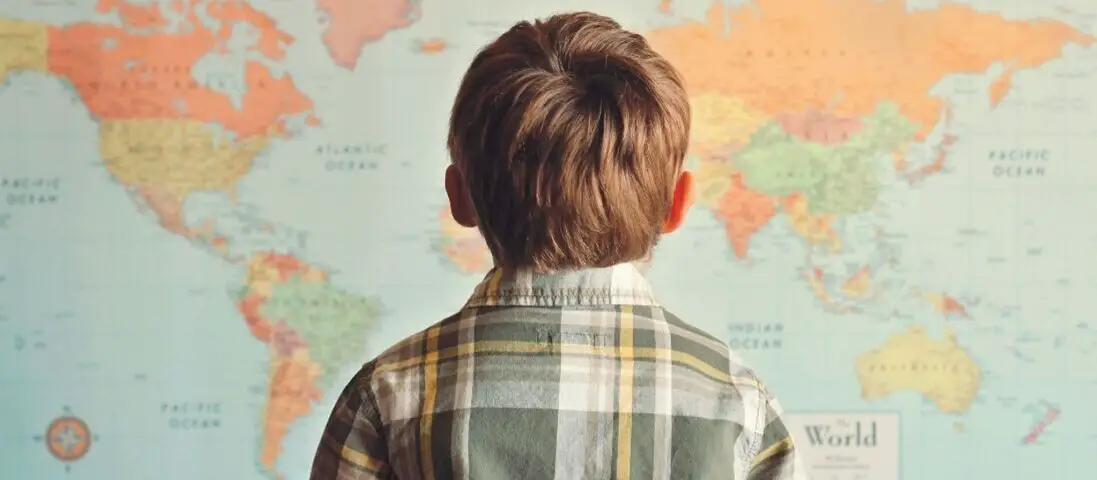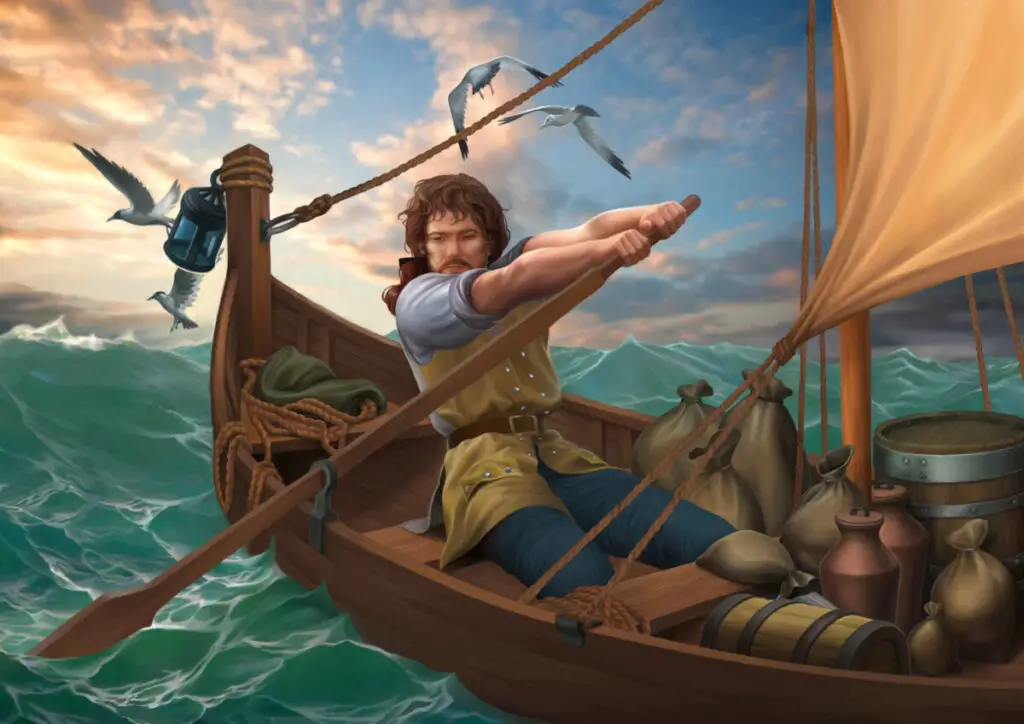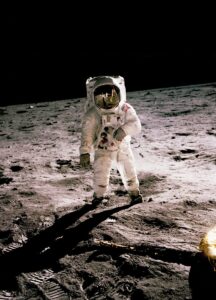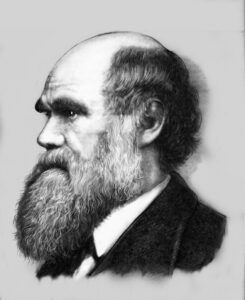|
Getting your Trinity Audio player ready...
|
Do you ever feel a sense of wanderlust, an unquenchable desire to explore new horizons and discover the unknown? Perhaps you dream of trekking through dense rainforests, gazing at snow-capped peaks, or strolling through winding alleyways in far-off lands. Whatever your travel aspirations may be, there’s no denying the allure of exploration.
Have you ever stopped to consider how travel and exploration impact one another? Here we study the intricate relationship between travel and exploration, exploring how each affects the other and how they interconnect. We assess great explorers and their influence on travel and exploration.
From Christopher Columbus and Marco Polo to Magellan and Neil Armstrong, the stories of famous explorers who used travel to aid their discoveries and impacted travel in various ways are intriguing. We examine how exploration led to an increase in tourism to previously undiscovered locations. Then later we saw the development of adventure tourism, and the preservation of natural and cultural sites.
We also show how travel has enabled increased scientific research and exploration, greater ease of access to remote locations. And how it has led to increased collaboration and knowledge-sharing among explorers.
So, pack your bags, grab your passport, and join us as we embark on a journey to explore the fascinating relationship between travel and exploration.
Travel and Its Impact on Exploration
Humans have always been nomadic creatures. Even before our early ancestors wandered out of Africa in search of better resources 70,000 years ago, travel was a necessity, and exploration meant survival.
Travel facilitates Exploration
Even as we settled down as farmers and empire-builders 10,000 years ago, our thirst for travel and exploration persisted. Trade with other territories and cultures was essential for an empire’s growth. Roads were built to facilitate the movement of troops and goods to and from other lands. The greater the civilisations, the more travel and exploration expanded. They were inextricably linked.
Access to New Places and Cultures
The Industrial Revolution in the 18th and 19th centuries marked a turning point in travel and exploration. Steam technology made it possible to travel longer distances, faster and more safely than ever before. Suddenly it was no longer just the very rich who could afford to travel the world – steam ships and trains brought travel to the masses.
The invention of the automobile further expanded the opportunities for exploration, as previously inaccessible corners of our own countries became open to discovery. Travel and exploration had become tourism.
There have been explorers throughout history who have ventured to discover new places and cultures. Territory and trade have been the great motivators in history, but adventure, fame, knowledge and scientific advancement have spurred individuals and governments into sending our species to every continent and country in the world.
Explorers in the Age of Exploration.
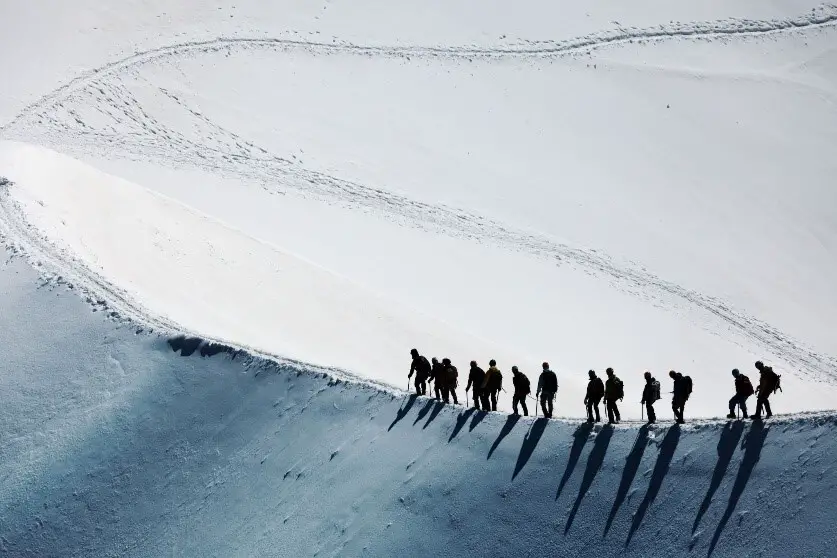
The greatest historical impact travel had on exploration was during what is now known as the Age of Exploration. This period between the 15th and 17th centuries is also called the Age of Discovery as the two actions are intertwined.
In the 1400s, money, political power and religion were the main incentives that set the sails in motion. Trade with the East for its valued spice was difficult and expensive. Muslim rulers and Italians controlled the movement of goods, so the European monarchs sought to find a better route. This led to a flurry of exploration and discovery.
Development of New Technologies to aid Travel
Many new inventions and advances in existing technologies occurred during the Age of Exploration.
- Telescope
Navigation by stars no longer depended on the naked eye. Sailors were able to chart courses as well as spy on enemy movements.
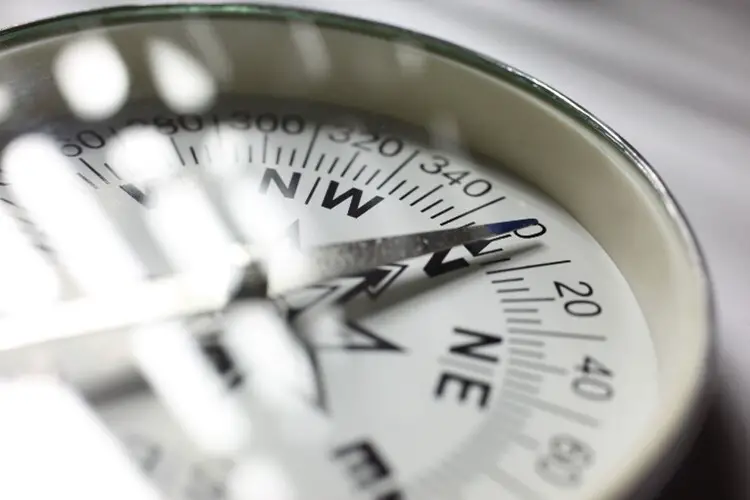
- Compass
The compass allowed explorers to travel and sailors to navigate with far greater accuracy.
- Astrolabe
Astrolabes helped sailors determine latitude by measuring the altitude of the north star.
- Map making
Better maps with more detailed information included the shape and size of continents, the locations of rivers, mountains, and coastlines.
- Theodolite and Sextant
Improved surveying techniques using a theodolite and sextant to measure angles and distances, meant more accurate mapping of coastlines, rivers, and other geographical features.
- Creation of Sea Charts
Sea charting made sailing much safer. Charts showed the locations of hazards such as large shoals of fish, reefs, and rocks. It allowed sailors to navigate dangerous waters with greater accuracy and safety.
- Ship building development
New building techniques and improvements meant ships could withstand long voyages.
- Weapons
More advanced weaponry gave explorers an advantage over natives living in newly discovered lands.
- The Printing Presses
Mass production of maps made them more widely available and affordable to the general public.
Despite these advances, exploration was still perilous. So, why did people do it?
The Appeal of the Great Unknown
Some of history’s most marvelous myths, legends, and monstrous creatures are the result of human fear and excitement of the unknown. Our curiosity about what lies beyond has always fascinated us and our imagination has fuelled stories both extraordinary and terrifying.
We create explanations for what we don’t know or understand. In the 1st century CE, Pliny the Elder described humans from India and Africa who were mouthless, hairy creatures known as Astoni. There were also one-legged beasts that hopped fast and used their enormous feet as umbrellas.
Bizarre beasts and grotesque monsters of lore were part of the medieval Christian narrative that represented ethics, morality and depravity. The creatures that inhabited the furthest reaches of the world were the creatures in the furthest reaches of our imagination. But as travel and exploration expanded, the monsters began to recede.
The Hero as Explorer.
Explorers have always captured our imaginations and their stories are now part of our collective history. The word ‘explorer’ has become almost synonymous with ‘hero’. The act of setting forth into the unknown to face one’s fears becomes an act of growth and transformation. Throughout literature, characters like Odysseus from Homer’s Odyssey, Gilgamesh, Gulliver on his travels, and Don Quixote all battled their monsters by facing the unexplained and the inexplicable.
The Dangers of Travel
The early explorers who set out to cross the Atlantic Ocean in the 15th century faced far more than the simple uncertainty of their destination. Their journeys were fraught with danger as they endured unpredictable weather, navigated unknown distances, and contended with food and water shortages on the unfathomable ocean. These challenges were a true test of their bravery. The Age of Exploration marked the beginning of the end of ancient fears and medieval superstitions of alien lands and monster-filled seas.
Famous Explorers in the Age of Exploration.
Christopher Columbus
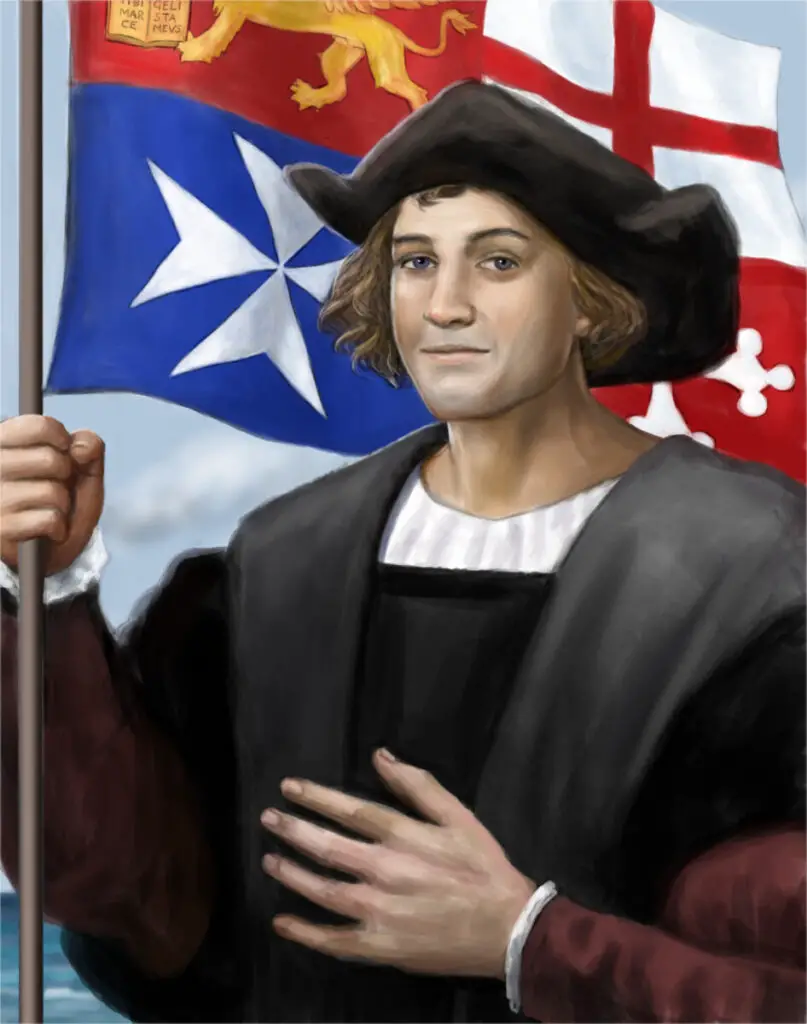
Every year, the US celebrates the arrival of Christopher Columbusin the Americas on October 12, 1492. While the man and his journey have become mythologised at the expense of historical accuracy, it doesn’t devaluate from the remarkable feat.
Although Columbus was convinced he had reached the Indies, his accidental discovery of the New World led to the eventual colonisation of the Americas. Columbus made three more voyages, during which he explored various islands and coasts of Central and South America.
Francisco Magellan
Christopher Columbus’ voyages opened passage for further exploration and colonisation by many others who followed his routes under the Spanish flag. Among these adventurers was Portuguese explorer Ferdinand Magellan, who was determined to be the first person to circumnavigate the world. While Magellan did not survive the journey himself, his expedition did, with only 18 of the original 260 crew members returning alive.
Creation of New Travel Routes
Exploration and travel not only opened new lands but also new trade routes that resulted in the exchange of previously unseen animals, plants and humans. The pursuit of spices was replaced by the discovery of precious metals, including gold and silver. This triggered a frenetic rush among nations to stake their claim.
Discovery of New Destinations

Soon after Spain and Portugal had planted their flags in the Americas, other European powers such as England, France, and the Netherlands quickly joined the race. Among the most famous explorers from this era was John Cabot, who claimed Canada for England while searching for a northwest passage to the Indies.
One hundred years later, Henry Hudson explored the continent on behalf of the Netherlands and sailed up the river that now bears his name. Although these explorers of northern America did not find the same riches as their counterparts in the south, they discovered other valuable resources. The hunting of fish, beaver, and otter helped develop further exploration and colonisation in the area.
The Impact of Travel and Exploration
During the 16th century, explorers such as Hernan Cortes, Francisco Pizarro, Nuño de Guzmán, and Vasco Núñez de Balboa shared the conquistador spirit of travel and exploration. Driven by a misplaced sense of moral, spiritual, and intellectual superiority, these colonisers did more than just expand trade and territory. They also left behind a dark legacy that continues to impact communities to this day.
The Darker side of Exploration
While the history of travel and exploration has led to many remarkable discoveries, it is not without its darker side. Our past is marred by a series of mistakes, and it is crucial that we learn from them and strive to create a more positive impact on travel in the future.
Some of the crimes committed during our exploration of the world include:
• Subjugation of indigenous populations
• Dislocation of communities and families
• Slavery
• Pillaging of resources
• Destruction of ecosystems
• Decimation of species such as the Dodo and Galapagos tortoises for food and oil
• Spread of diseases like smallpox and the common cold, leading to the deaths of millions
Lasting effects of colonisation still felt today are unequal distribution of wealth between developed and developing countries.
The Effect of Exploration onTravel
The impact of exploration on travel may have its negative side, but it has undoubtedly been the most significant driver of cultural exchange, economic development, and scientific advancement in human history. The discovery of new destinations, routes and resources is due to exploration. This in turn inspires people to want to travel which initiates faster and more convenient transport and advanced technology.
The Age of Enlightenment
The Age of Exploration led inevitably to the Age of Enlightenment. Progress has moved faster and more dramatically in the last 500 years than at any other time in our history. And we have the Age of Exploration to thank for that. Some of the most significant changes seen in the 17th and 18th centuries were in:
Philosophy:
- A new emphasis on reason and the scientific method created thinkers like John Locke, Voltaire, and Immanuel Kant who laid the groundwork for modern philosophical thought.
Science:
- Scientists and engineers such as Isaac Newton and James Watt forged ground-breaking advances in science and math, leading to important inventions like the steam engine.
Politics:
- The Enlightenment inspired new ideas about individual rights, democracy, and government. Revolutions in America and France were influenced by Enlightenment ideals.
Literature:
- Writers like Jonathan Swift, Voltaire, and Jane Austen produced works that explored human nature and criticised society.
Art:
- Simplicity, rationality, and order were also seen in the art style of Neoclassicism. The works of artists like Jacques-Louis David and Antonio Canova exemplified this style.
Education:
- The Enlightenment had a profound impact on education, with new ideas about the importance of education for all and the establishment of public schools and universities.
Famous Explorers who Impacted Travel
Explorers throughout history have impacted travel, positively or negatively, one way or another. Here are a few that made an important contribution to travel through their acts of exploration.
Marco Polo

During the 13th century, Marco Polo, a notable Italian merchant and explorer, made a profound impact on travel and exploration. His ambitious adventures throughout the East provided Europeans with some of the earliest detailed descriptions of the region’s geography, cultures, and customs.
His descriptions of the unusual goods and wealth of China, Mongolia, Japan, and India helped dispel many misconceptions of rudimentary and backward peoples. Their cultures captured the imagination of many Europeans, leading to an increased interest in travel and trade.
Marco Polo’s documentation of Chinese inventions brought about the introduction of paper, gunpowder, and porcelain to the West, contributing to the advancing Age of Exploration.
Lewis and Clark
Lewis and Clark were one of the most famous American exploration duos in history. In 1804, they were commissioned by President Thomas Jefferson to lead an expedition to explore and map the newly acquired Louisiana Territory.
Their journey lasted over two years and their maps and reports provided a wealth of important information. The expedition helped to promote expansion into the previously unexplored American Wild West.
Neil Armstrong
On July 20, 1969, Armstrong became the first person to step onto the face of the Moon, followed by Buzz Aldrin. This event forever changed the way humans view space and space travel, and even our own planet – the fragile blue marble.
This milestone mission in space exploration was encapsulated in his words, which became one of the most famous phrases in history.
That’s one small step for man, one giant leap for mankind
Neil Armstrong, 1969
The moon landing sparked an interest and subsequent investment in space exploration. Numerous space programs and initiatives were launched in the years following the Apollo 11 mission. The discovery and exploration of space has since become a major focus for scientists and researchers, with numerous advancements in the fields of technology, engineering, and astronomy.
Travel and Exploration are Interconnected
Travel and exploration are deeply interconnected. Exploration fuels curiosity and a desire for adventure, which inspires people to travel and seek out new experiences.
Travel fulfills a desire for adventure and knowledge.
For example, the discovery of Machu Picchu in Peru by Hiram Bingham in 1911 sparked an interest in South America, and today, Machu Picchu is a popular tourist destination that attracts thousands of visitors each year.
Travel and exploration in the name of science
During the 19th century, scientists, driven by a keen desire to unravel the secrets of the natural world, (and a healthy dose of personal ambition), became the next wave of intrepid explorers.
Pioneers such as Charles Darwin, Alfred Russel Wallace, David Livingstone, John Wesley Powell, Alexander von Humboldt and many more, embarked on often perilous journeys through unknown territories.
They faced dangerous and unfamiliar wildlife, sickness, unpredictable weather, and other hazards. Their expeditions often involved mapping uncharted territories and conducting scientific research, leading to ground-breaking discoveries and new insights into the natural world.
The Impact of Exploration on the Travel Industry
The discovery of new lands and cultures has had a profound impact on the travel industry. It has given rise to the development of many new services and facilities such as accommodation, transportation, catering, and entertainment.
Tourism continues to be transformed to adapt to changing cultural sensitivity and environmental awareness. As the demand for adventure tourism and eco-tourism becomes greater, the more we need to take measures to protect and preserve the environment and the cultural and historical heritage sites.
Development of adventure tourism
Adventure tourism involves travelling to remote or alluring locations for the purpose of engaging in physically challenging and/or exciting activities. It often involves outdoor activities such as:
- Hiking
- Rock climbing
- Bungee jumping
- Skydiving
- Rafting
- Kayaking
- Zip-lining
- Wildlife safaris
As travellers continue to explore unique and authentic experiences, an awareness of minimising negative impacts on local communities and wildlife becomes essential.
Development of Eco-Tourism
The rising interest in eco-tourism reflects a growing sensitivity and appreciation for conservation, sustainability, and different cultures.
Modern explorers are often specialists that possess a specific skillset. For instance, medical students may embark on expeditions to remote parts of the Amazon. Ecologists and biologists travel to some of the most distant corners of the world to study climate change or species extinction.
For those who aren’t experts in these fields, eco-tourism offers an opportunity to participate in similar activities and feel they are contributing to worthwhile causes.
Increase in Tourism to previously Undiscovered Locations
Despite the mistakes made by humans in their pursuit of new lands and resources, as well as the subsequent impact of mass tourism worldwide, we are beginning to recognise the significance of responsible travel.
Over the past 30 years, technology has transformed exploration and travel. When Sir Ranulph Fiennes led expeditions in the late 60s and 70s, they still relied on Morse code, compasses, watches, the sun, and the stars.
The Arctic and Antarctic remained largely unexplored until the 20th century. However, with today’s advanced GPS and satellite phones, modern clothing and equipment, travel to the most inaccessible places are attainable.
The Future of Travel and Exploration
Since our ancestors first gazed at the heavens, early civilisations charted constellations, and sailors and navigators were guided by the stars, humanity has been destined for space.
TV series and movies of the 1950s and 60s took us to strange new worlds where the monsters were no longer those living on Earth. They had relocated to the Final Frontier. The unknown still captures our imagination, and the desire to boldly go where no one has gone before, continues to send us ever further afield.
Travel is in our DNA, literally, and the future holds endless possibilities for us to explore new horizons and push the boundaries of what we once thought possible. The travel and exploration of tomorrow is already directed towards Mars. The Moon and eventually other planets and solar systems will no doubt follow close behind.
Final Thoughts
By exploring the relationship between travel and exploration, one thing is clear. These two concepts are intertwined, each impacting the other in ways that are profound and fascinating. From the intrepid explorers who set sail to discover new worlds, to the curious travellers who seek out adventure in far-off lands, we have seen how travel and exploration can fuel one another, driving us to seek out new experiences and broaden horizons.
But beyond the thrill of adventure and the excitement of discovery, this relationship between travel and exploration has far-reaching implications for the world we live in. Through exploration, we have discovered new destinations, created new travel routes, and developed new technologies. Through travel, we have been able to preserve natural and cultural heritage, support scientific research, and increase collaboration among explorers.
By now we should appreciate the profound impact that travel and exploration has had on our lives and the world. Therefore by continuing to explore, discover, and push the boundaries of what we know, we can create a brighter future for ourselves and for generations to come.
FAQs
Q: How does travel facilitate exploration?
A: Travel provides access to new places, cultures, and languages. It also offers opportunities to learn about history and geography, all of which aid exploration.
Q: How has exploration impacted travel?
A: Exploration has impacted travel in various ways, such as discovering new destinations, creating new travel routes, and developing new technologies.
Q: What is the relationship between travel and exploration?
A: The relationship between travel and exploration is vital and mutually beneficial. Each facilitates the other, providing opportunities to discover new places, engage in scientific research, and preserve natural and cultural heritage.
Q: How has exploration led to an increase in tourism?
A: Exploration has led to an increase in tourism to previously undiscovered locations, as people seek to experience new and exciting places.
Q: What benefits has travel enabled for exploration?
A: Travel has enabled increased scientific research and exploration, greater ease of access to remote locations, and increased collaboration and knowledge-sharing among explorers.

